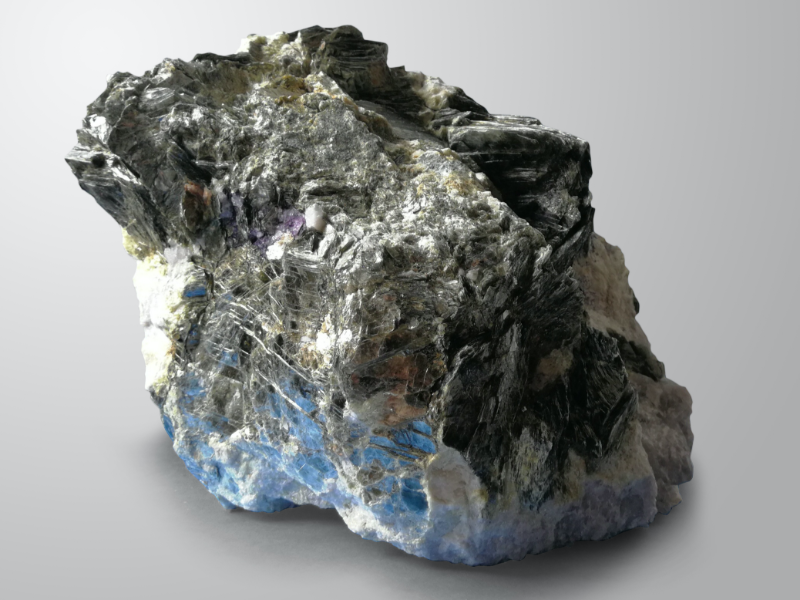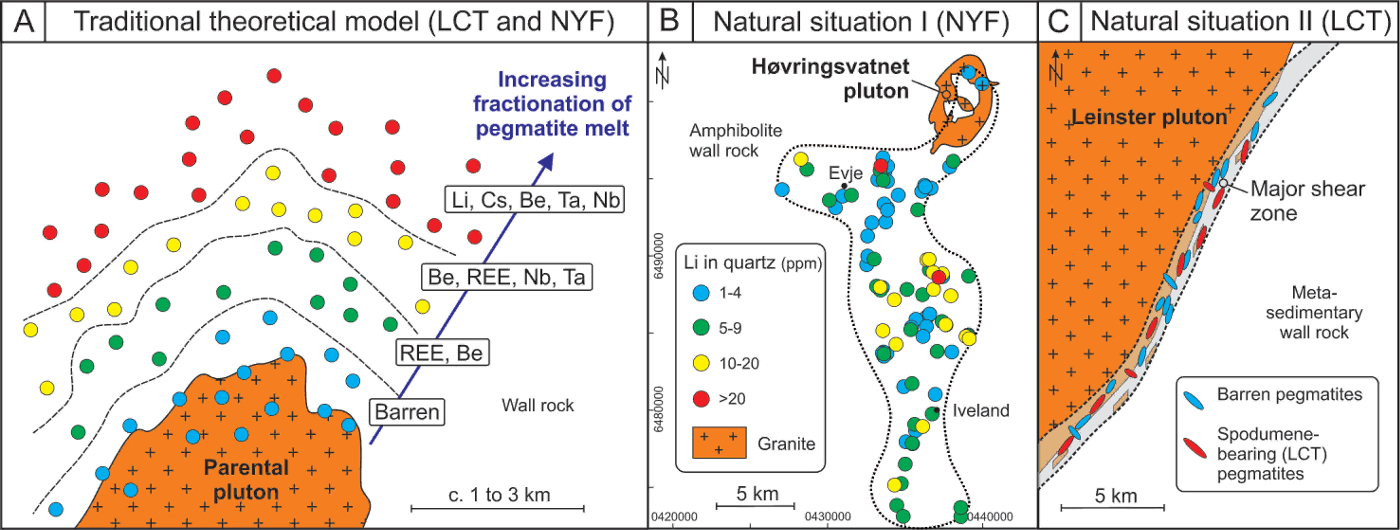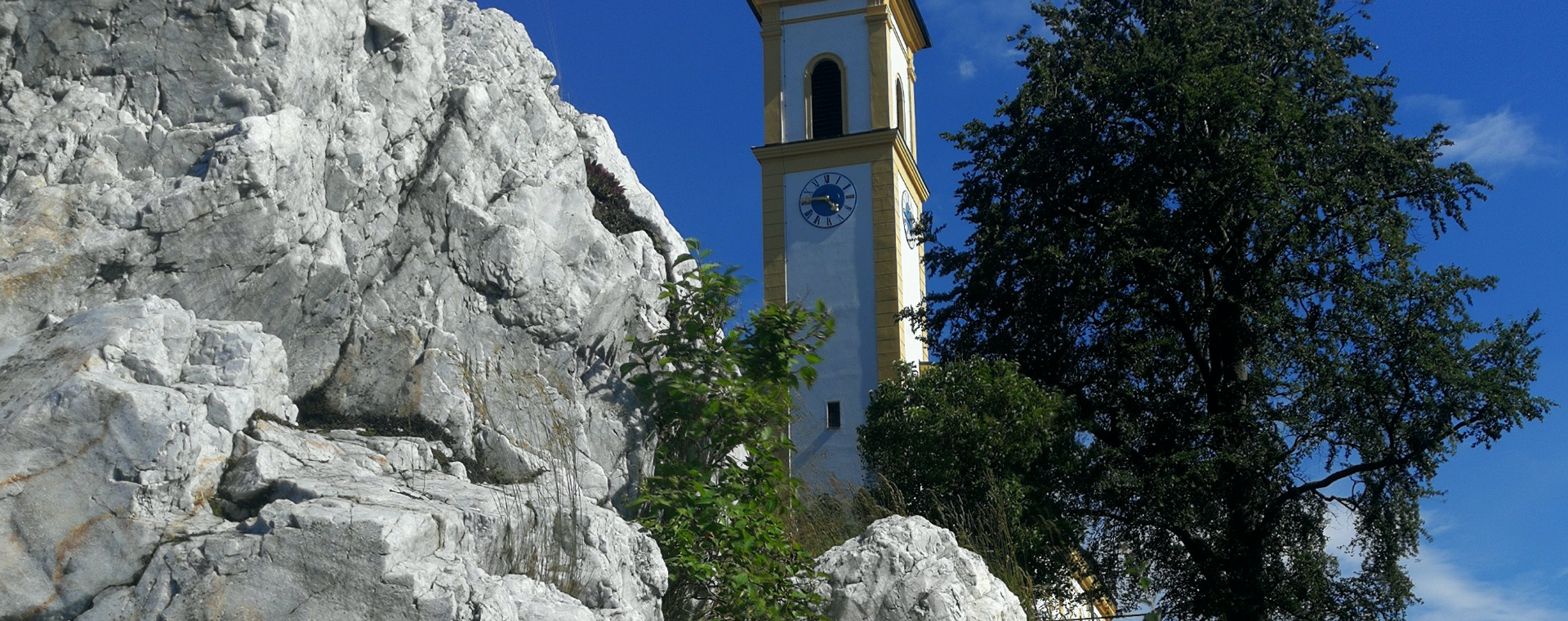
Pegmatites
Many of the raw materials for green energy production can be sourced from a rock type known as pegmatite. This is an igneous rock, formed underground, from magmas that are enriched in fluids and often in rare metals. They tend to crystallize with interlocking crystals usually larger than 2.5 cm in size. Most pegmatites are found in sheets of rock, like dikes and veins, often near large masses of igneous rocks called batholiths. Granitic and syenitic pegmatite deposits are the chief source of commercial feldspar, high-purity quartz, sheet mica, and beryllium, tantalum–niobium, and lithium minerals. Some pegmatites are mined for gem minerals, mica, molybdenite, cassiterite, tungsten minerals, rare-earth minerals. Economic lode concentrations generally may occur in unzoned or in zoned pegmatite bodies (i.e., those in which two or more different rock types are systematically disposed).
Pegmatites as a Cultural Heritage
Discover the mineral wealth and economic meaning of pegmatite mining or just the beauty of their exposure in the landscape such as in Pleystein. Here, in Upper Palatina, Germany, one of the largest pegmatite provinces in Europe, pegmatites have been intensively mined, like the famous Hagendorf pegmatite. Only the Kreuzberg, a mountain entirely composed of rose quartz, survived and became a famous pilgrim destination.
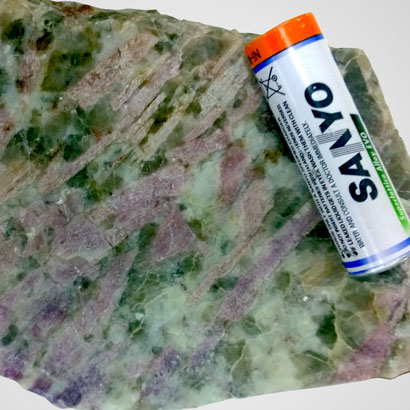
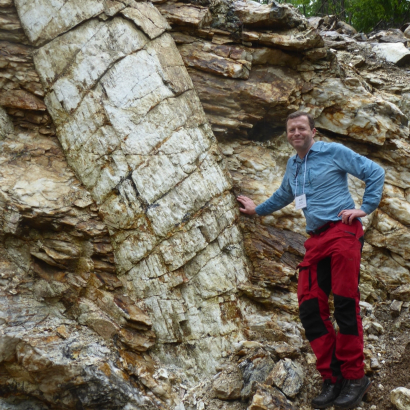
Towards a better understanding of Pegmatites
Pegmatites, illustrated as colored dots in Figures A to C, occur in fields. The traditional theory is that pegmatites show a regional chemical zoning: primitive pegmatites occur close to a supposed parental granite (orange) and evolved ones away from the pluton (Figure A). In nature, pegmatite fields do not show such a zoning. In Evje-Iveland, Norway (Figure B), evolved pegmatites occur in the field center (red and yellow dots). In Leinster, Ireland (Figure C), spodumene- and barren pegmatites are aligned in a shear zone. GREENPEG develops new genetic models, which imply that rare metal enrichments and distribution of most European pegmatites are controlled by the chemistry and degree of partial melting of wall rocks and the presence of tectonic structures. The new genetic models are the base of GREENPEG-invented exploration toolsets.
